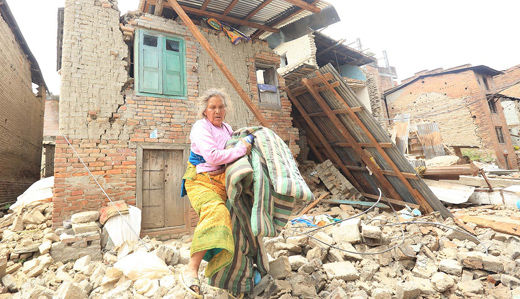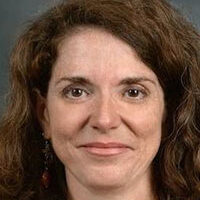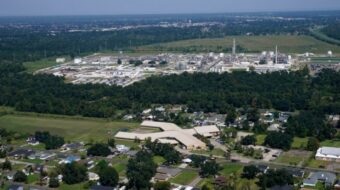
Almost two weeks have passed since the devastating earthquake hit the south Asian nation of Nepal on Apr. 25. Deemed the worst earthquake to hit the nation in 80 years, the death toll has risen to more than 7,500, with tens of thousands injured and homeless. The U.N. says the quake affected 8.1 million people – more than a quarter of Nepal’s 28 million people – and after the initial chaos, the organization is now coordinating with the Nepalese government the international relief effort.
The government’s seemingly snail-like pace in distributing aid to victims, especially to remote villages, has dominated media reports with quotes from angry Nepalese citizens or snide editorial comments about perceived incompetence and corruption. No doubt both incompetence and corruption are part of any human endeavor, whether governmental, public or private. But it would be important to understand the objective circumstances that have restricted and restrained the government’s efforts.
Rescue, recovery, and rebuilding operations are usually difficult to conduct even under the so-called best circumstances. Nepal, one of the world’s poorest countries, ranks towards the bottom of a United Nations list that measures human development. It has also experienced years of authoritarian rule, military and armed insurgent violence, with a post-war multi-party democratic system just in its infancy.
Consider the post-disaster disaster after the original “Katrina moment” of President George W. Bush. More than 3,000 people perished during that 2005 hurricane while hundreds of thousands were displaced, many permanently, from their homes in New Orleans. The federal response was an unmitigated disaster and had political consequences for Bush.
Coming on the 10th year anniversary of that dire situation, the neighborhood catapulted into national consciousness – the Lower Ninth – which suffered from the perfect storm of natural and man-made disasters of poverty, racial segregation and the failure of levees to hold back the floodwater, has only 1,800 residences that received mail last year, compared to the 5,400 residences, which housed 18,000 people before Hurricane Katrina hit. In other words, even in the richest country in the world, a social order based on class and racial oppression, along with corporate and political corruption – all man-made – complicates rescue efforts, intensifies suffering, and prevents effective recovery and rebuilding.
The Nepal government has far less resources per capita than the U.S. To get to remote villages, helicopters are needed and the government has only one. According to The New York Times, “Any government in the world would have been overwhelmed by the scale of this disaster, but the logistical difficulties in Nepal, a poor, near-roadless, mountainous land, are extraordinary. The country’s only international airport is still operational, and China and India quickly started flying in relief help. But the Nepali Army itself has only one big helicopter.” That operational airport was quickly overwhelmed and banned big jets from landing because of possible damage to the runway.
Writing for The New Yorker, Prashant Jha said there are split views on the government’s handling of the situation: one that says “no government could have dealt with a crisis of this magnitude, let alone Nepal’s,” and the other that argues, “because Nepal is in a seismically vulnerable zone, the government should have been better prepared.” Such split views may also reflect the splits in Nepal’s politics, which has prevented the government from adopting a permanent constitution.
Nepal’s years of political and social turmoil, including a civil war between armed Maoist rebels and the royal dictatorship of King Gyanendra, which ended in 2006 after widespread protests and a general strike against the government, and a war, forced a peace deal. In 2008, Nepal held multi-party elections for a Constituent Assembly.
The newly-elected lawmakers then “abolished the monarchy and declared the country a republic, ending 239 years of royal rule in the Himalayan nation.” Seven years later, several ruling CA coalitions, led by different parties, have tried unsuccessfully to adopt a permanent constitution, which adds to the political uncertainty and gridlock hemming in relief efforts.
The perception of the government’s handling of things has significant consequences going forward as to who is in charge when it comes to deciding relief priorities and longer-term rebuilding – the government or other “actors,” Jha writes. Geopolitical jockeying for influence, in particular between the “big three” – United States, China, and India – referred to as “disaster diplomacy,” becomes a factor here as do global financial institutions like the International Monetary Fund and World Bank.
Nepal carries $3.8 billion in debt to foreign lenders, prompting calls from groups such as Jubilee USA to cancel the country’s debt as a form of disaster relief.
But the Nepalese people themselves have rallied to do what they can to help their families and neighbors during the disaster. Taylor McCleneghan, of Mata Traders, a Chicago-based fair trade business with artisan suppliers in Nepal, has been in touch with the company’s partner supplier who has described stories of incredible fortitude and grace in the wake of the disaster.
Most of the artisans are women who live in Nepal’s capital, Kathmandu, having left their home villages for work and opportunities in the city. Immediately after the quake, they left Kathmandu to “return home to find their loved ones and assess the damage,” McCleneghan wrote in an email interview. Without cellphone service, thousands of people could not “communicate with loved ones – they simply had to start making the journey out to their villages and wait to see the damage.”
But that also meant markets and shops in the city were closed either from concern about their facilities’ structural safety – or because the owners and workers “may also have been fleeing to the rural areas. As a result, there was an immediate shortage of fresh foods – people were sharing what packaged dry goods they had.
“Access to water was also a major issue immediately after the earthquake – as the power supply to operate pumps at private residences was down, and the safety of city water supply had been compromised as well,” McCleneghan said.
She said that Fair Trade Group Nepal “immediately started pooling funds to buy food packs, tents and water to deliver to the worst hit areas. They spent entire days trying to reach villages just 20-40 miles away.”
When she spoke to the CEO of Mahaguthi, one of the companies in the group, he told her despite villages being without “outside people or aid” the resilience of the Nepali people came through. “That even without receiving any aid for that long, and having everything destroyed, they were still smiling and found a way to offer their team lunch,” McCleneghan said.
In addition, on Apr. 29, one of Nepal’s leading political parties, The Communist Party of Nepal (UML) formed the Rescue and Relief Central Coordination Committee and provided five million rupees (almost $50,000) in aid for quake victims collecting it from “central leaders, lawmakers and employees.” The announcement included the bank information.
The CPN (UML) also mobilized its lawmakers to assist quake-affected districts. The relief committee organized volunteers from youth and sports groups to help maintain “cleanliness” in Kathmandu’s temporary camps and set up health and food services. (The CPN (UML) is not the same as the Maoist political party and did not agree with nor participate in the armed insurgency.)
Communist and workers’ parties in the region have been mobilizing to raise money for relief efforts. The Communist Party of India has been raising money and supplies recently donating 1,000 solar LED lights as part of the party’s relief mission.
If readers are interested in donating to relief efforts, here are a few to consider:
UNICEF: http://www.unicef.org
Fair Trade Group Nepal: http://www.fairtradegroupnepal.org/event.php
Serrv: http://www.serrv.org/product/nepal-earthquake/gift-donations
MoveOn/Mercy Corps: https://civ.moveon.org/contrib/mercycorps.html?bg_id=hpc3&id=113775-17596257-9yB7awx&t=115
Photo: This image shows some of the damage in Sankhu, a particularly badly affected town in northwestern Nepal. | Laxmi Prasad Ngakhusi / UNDP Nepal, Flickr










